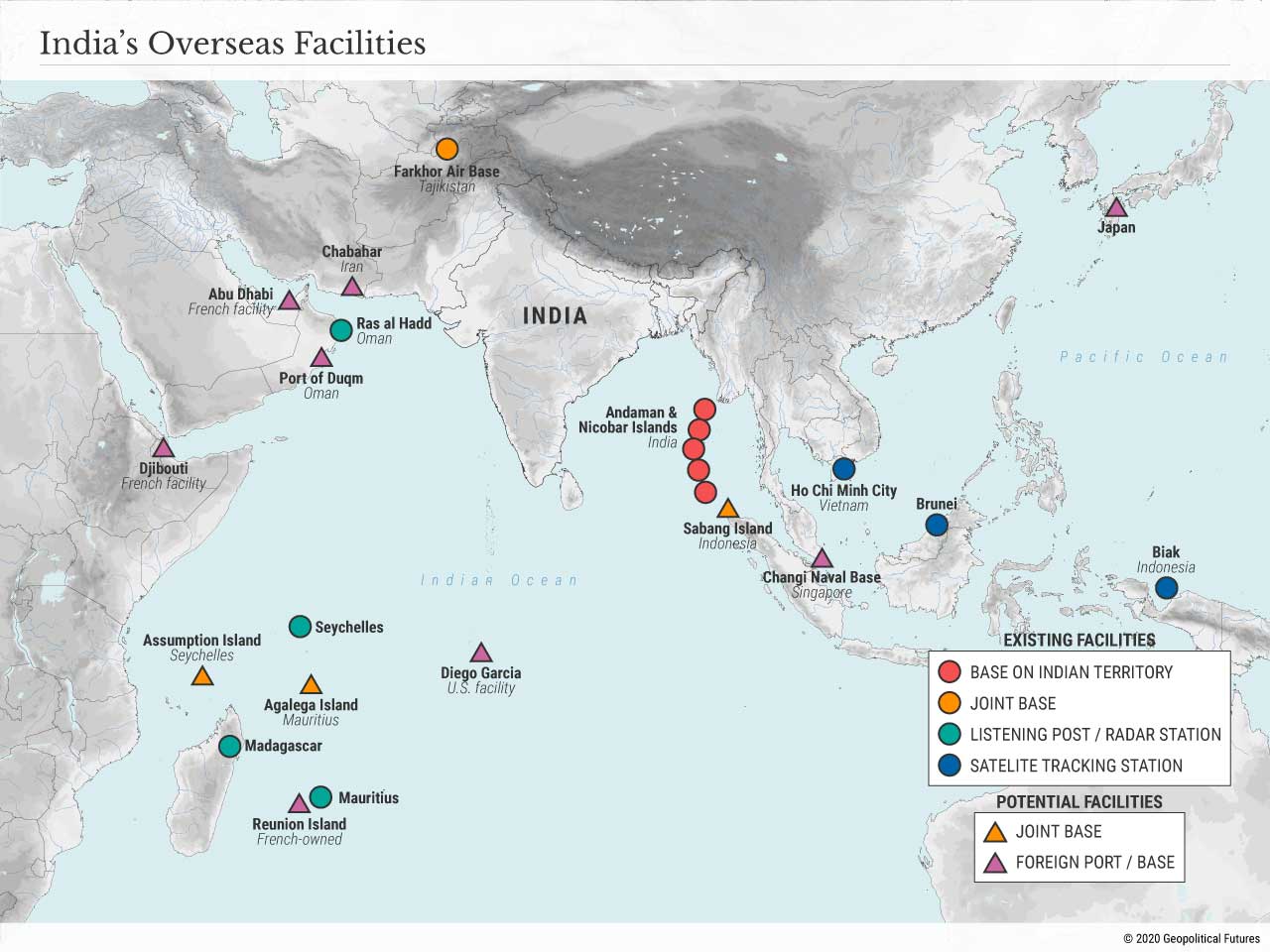As China expands its maritime asperations into the Indian Ocean, India is building a modern navy. To protect its increasing export trade and its coast line, which is around 7200 kilometers long.
India doesn't need to have parity with China- ship for ship, missile for missile. It just needs to use its favorable geography to its advantage.
India’s Trump Card Against China
Despite its enormous potential, India is by no means an inevitable counterweight to Chinese ambitions in the Indian Ocean. The country’s immense domestic needs and its preoccupation with land-based threats have prevented it from turning its attention fully to the maritime realm. And the more China races ahead with its breakneck military expansion, the harder it will be for India to catch up.
But it’s a mistake to look at Indian and Chinese maritime capabilities as an apples-to-apples comparison. India doesn’t need to match China destroyer for destroyer or missile for missile because India has some extraordinary geographic advantages in its favor – ones that also happen to make it particularly attractive as a partner with other powers in the region. And the strategically invaluable Andaman and Nicobar Islands, India’s great trump card in its intensifying competition with China, is moving into the spotlight.
India’s Point of View
For a country with more than 4,500 miles (7,200 kilometers) of coastline, India has never been particularly ambitious in the maritime sphere. This is, in part, because for much of its history it didn’t have much reason to be. Geographically, India is protected by the near-impenetrable Himalayas to its north, harsh subtropical regions to its east and deserts to the west. Its long coastline makes it vulnerable to seaborne threats, sure, but few powers have ever been capable of exploiting this vulnerability. Buffered by the vast waters of the Arabian Sea, the Bay of Bengal and the open ocean, India is blessed with abundant strategic depth when it comes to naval threats. And at any rate, any invading power would confront India’s demographic immensity, which makes direct subjugation by force nearly impossible.The Metal Chain
China has little reason to fear India as a major threat to its interests in, say, the South China Sea or around Taiwan. But India doesn’t need to achieve military parity with China to become a problem. It simply needs to leverage its geographic advantages and the growing interest in cooperation from external powers like the U.S. This puts the spotlight squarely on the strategic godsend that are India’s Andaman and Nicobar Islands.
The archipelago, featuring some 572 islands (just 38 of them inhabited) stretches from just 100 miles north of the northern tip of Indonesia’s Sumatra island through the heart of the Andaman Sea toward Myanmar. The islands are, in effect, the gateway to the Strait of Malacca. In the view of Chinese defense planners, the more apt metaphor for the islands is a “metal chain.”
For India, developing the capabilities needed to threaten Chinese access to Malacca from the Indian mainland would be difficult and expensive, requiring rapid leaps forward in its submarine, aircraft carrier, air force and missile programs, as well as in India’s military logistics and surveillance capabilities. Threatening Chinese access to Malacca from the Andaman and Nicobars is more straightforward. The archipelago is the proverbial “unsinkable aircraft carrier.” Indian bases there are ideally placed for conducting surveillance operations, deploying anti-ship missiles and radar stations, stationing supply depots, refueling fighter planes, and so forth.
The islands, moreover, make India immediately attractive as a partner for powers like the U.S. that already have the capabilities to maximize their strategic value – something that could allow India to keep China at bay without breaking the bank by trying to match China’s spending on the People’s Liberation Army. India’s growing ties with Australia are particularly notable in this regard, given how Australia’s Cocos Islands could play a similar role in blocking Chinese egress through the Sunda and Lombok straits. The Andaman and Nicobars also could facilitate deeper military cooperation with Southeast Asian countries that historically are leery of provoking China without the ability to defend themselves. In 2018, India and Indonesia reached a tentative reciprocal access agreement giving India access to a port on the Indonesian island of Sabang, located just southeast of the southernmost Andaman and Nicobar island.


 The Current Events Room
The Current Events Room



 Reply With Quote
Reply With Quote